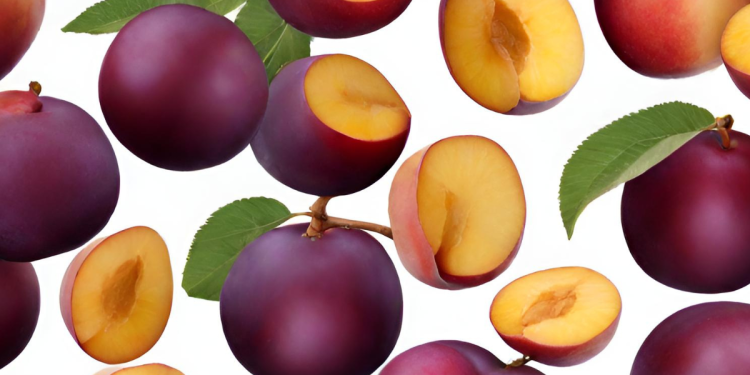The option presents itself to you in the vegetable aisle like a word puzzle. Plums and plumcots in tints of green, purple, and orange can be plums or apricots. In this strange Venn diagram of late-summer Frankenfruits, which will you choose?
Learning From The Blog
When plums and apricots fall in love, they marry and have children, which is where plumcots and plots originate. Many are unaware of how seasonal fruit hybrids go from the orchard to the grocery store.
While this can be a simplified version for primary schools (without a produce-gifting stork), it is a common misconception, which Is why we have bought this blog to enlighten you about Plum and Pluot.
What Are Plums And Pluot?
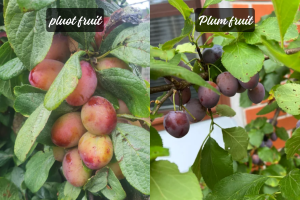
Let's get down to business. The traditional rule of (green) thumb for the tasty three is as follows:
- Plumcots are a 50/50 hybrid between plums and apricots.
- Pluots (pronounced plew-oughts) have a smooth skin and are plumier than Plums.
You should know that there are hundreds of types of plums and apricots, and the crossing has been going on for decades.
All About Plums
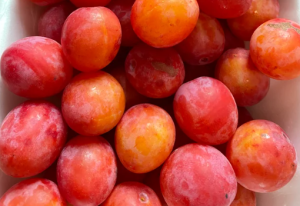
The 50-50 cross-pollination of a plum and an apricot produces a plumcot, a fuzzy, purple, and red-skinned stone fruit with delicious red meat that has the mild and characteristic taste of an apricot.
Growth Season
Plumcots have a very short growth season, from mid-May until early July. A mature apple will be firm but flexible when squeezed. Keep them at room temperature until mature, then refrigerate for a week or more. This will keep the hardness until they are ready to be devoured.
Types
Because plumcots come in various colors (including green, which is the sweetest of the bunch), determining maturity based just on look is challenging. Don't judge a book by its cover, just like you would with books in a library.
Also Read: Jalapeno Plant Stages: Step by Step From Seed to Harvest
All About Pluot
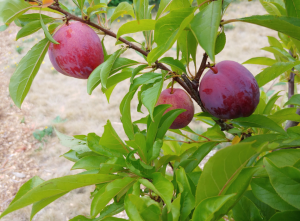
The plum-forward pluot retains the majority of the physical traits of a plum, including smooth skin and a deeper shade, but the flavor is significantly less acidic due to the inclusion of apricot.
It is normally the sweetest of the two (since the bitterness associated with plum skins is almost non-existent), but there are so many offshoots of the OG that an uber-tart pluot would not be out of place.
How To Select Them?
Unfortunately, it appears more difficult to ripen plums at home, so only buy plums that feel as near to ripe as possible. However, pluots, like apriums, can be kept in a loosely sealed paper bag or on a kitchen counter until they mature. Once they've achieved your preferred texture, refrigerate them for a week to maintain their freshness.
Growth Season
Pluot season is from mid to late summer, with some kinds accessible as late as October. Keep them in mind when you start stocking up on apples and pumpkins – a pluot crumble, pie, or tart is a delicious way to greet the flavors and aromas of autumn.
Also Read: Pitaya vs Pitahaya Fruit: Unveiling the Major Differences
Plum Vs Pluot
Trying to distinguish between heaps of plumcots and pluots at the farmers market is a difficult endeavor, so here's all you need to know about plumcots, pluots, and how to tell them apart.
Origin
Plumcots and pluots are hybrid fruits created by crossbreeding plums and apricots.
However, plumcots predate pluots by over two decades. Plumcots are the first plum and apricot hybrid, a first-generation fruit from cross-pollinated trees developed by horticulture Luther Burbank in the nineteenth century. The fruit is a 50/50 mix between plums and apricots. Floyd Zaiger made Pluots, which appeared later in the 1980s. They were developed by cross-breeding Burbank's plumcots with plums and are around 75% plum and 25% apricot.
Flavor
Though plumcots and pluots are derived from the same stone fruits, they have distinct flavors and textures.
- Plumcots have a sweet flavour balanced with pleasant acidity. It tastes like plum, with a flowery undertone from its apricot origins.
- Pluots taste similar to plums but with a rich, almost candy-like sweetness and a whisper of acidity.
Texture And Appearance
Plumcots and pluots appear in various colors, from mild green to deep violet.
- Plumcots have semi-soft flesh with a hint of delicious crunch. Their skin is paper-thin, with a dazzling waxy sheen.
- Interestingly, while pluots are more plum than apricot, their texture is more like solid apricot than sensitive plum.
- Pluots have a small give when pushed, but they aren't very soft or juicy. Their exterior skin is smooth with a faint gloss and a speckled appearance.
Uses
Plumcots and pluots, like other stone fruits, are equally excellent baked into pies and tarts, cooked into a crumble, or caramelized on the grill as they are eaten straight off the tree.
- Plumcots function significantly better in savory applications like salads or marinades since they have a more nuanced flavor.
- Pluots are ideal for desserts since their inherent sweetness reduces the need for additional sugars.
Substitute pluots or plumcots for peaches in our Peach Shortcake or Peach Crisp recipes for a unique spin on a popular treat.
Also Read: The 7 Cucumber Growing Stages Explained: From Seed to Salad
Which Is Better: Plum Or Pluot?
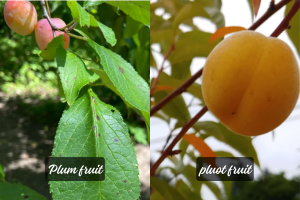
Pluot
A pluot is predominantly plum with a little apricot sprinkled in. You receive a solid plum-like texture and a distinct apricot flavor. The Zaiger family trademarked “Pluot” in the 1980s, therefore, pluot cultivars are also known as Dapple Dandy, Geo Pride, and Flavour Supreme.
Plumcot
These 50:50 combinations are first-generation plum-apricot hybrids. The parent varietals determine the color. While some plums can be harsh, they are almost always delicious. They would make an excellent substitute for apricots in this tart freezer jam recipe.
Is There A Similar Alternative?
Orange-fleshed apriums have fuzzy skin and taste like apricots, but they are slightly sweeter, juicier, and firmer.
Apriums have a more extensive growth season than plumcots. They can be found in supermarket shops from mid-May until September.
What Is The Similarity?
Apriums, like plumcots, are ripe when firm yet retain a faint spring when pressed. They are also highly fragrant when ready to eat.
People should also avoid judging this fruit based on its external color, since a particularly delicious and ripe aprium may not be totally orange.
Storage
Unripe apriums should be stored in a loosely tied paper bag until ready to eat, but once they've obtained optimum hardness, place them in the refrigerator.
Also Read: 7 Steps of Garlic Growth Stages: From Planting to Harvesting
Final Thoughts
Stone fruits are a form of drupe, thin-skinned fruits with soft flesh encased in a hard stone or pit containing the seeds. Mangoes and olives are also included in this category, but most people associate stone fruits with the Prunus genus (peaches, apricots, cherries, and plums). While all this is confusing, we hope this guide helped you know the difference between Plumcots and Pluots.


